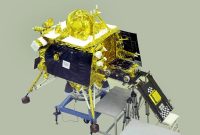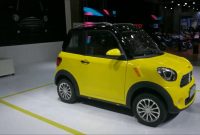Overview Of Information Technology (Part I)

The world has moved from the modern age to the data age.
The entire world currently relies upon data, and instruction as a foundation is no exemption for this very truth.
The world saw a data insurgency, a mix of the huge expansion on the planet’s supply of data and the specialized advancement of the method for handling and sending data
PCs are the focal point of data innovation.
Data is the thing that PCs cycle, send, and store. We use PCs to make, process, and oversee data quicker and simpler than any pre-planned framework.
Along these lines, as you better get PCs and what they can and can’t, you’ll have more ability to utilize the data to work for you. Information is power!
Yet, data innovation doesn’t just incorporate PCs.
It likewise incorporates the strategy for consolidating PC and correspondence advancements, and the outcome is “data innovation” – INFOTECH – an innovation that coordinates processing with the media communications interfaces that convey information, voice and video.
Accordingly, there are two divisions of IT – Computers and Communications.
Moreover, Information Technology (IT) as characterized by Longman Dictionary of Contemporary English is the review or utilization of an electronic processor to store and make accessible data; data innovation.
Also, prior to proceeding with connecting it to the issue of the Nigerian schooling framework, I actually need to think about the second idea of data innovation.
This idea is correspondence innovation.
Correspondence Technology:
This is the innovation used to convey (advanced) information.
Information correspondence, frequently called media communications, implies the electronic transmission of information and data starting with one point then onto the next utilizing phone, radio, microwave transmission gadgets, lasers, fiber-optic links, and direct wires.
PCs can be independent machines that are not associated with whatever else.
On the off chance that everything you do is word handling to compose the research project;
That may be fine.
The correspondences part of a PC framework incredibly expands the scope of PCs.
Information correspondence gives data handling administrations all through the workplace all throughout the planet.
indeed; To have the option to comprehend the idea of data innovation, you should be acquainted with how PCs work.
There are three fundamental ideas that structure the premise of PC activity:
In the first place, the motivation behind a PC is to handle information and transform it into data.
The information comprises of crude statistical data points that are handled into data for instance, the votes of various competitors who are chosen for an understudy government office.
Data will be information that has been summed up or in any case controlled for use in dynamic, for instance, the all out votes in favor of every applicant, that is utilized to decide the champ.
Second, you should know the distinction among equipment and programming. Equipment comprises of the relative multitude of machines and hardware found in a PC framework.
The equipment, among others, incorporates the console, screen, printer, and “box” – the PC or the handling gadget itself.
programming or projects;
It comprises of all guidelines that let a PC know how to play out an assignment.
These directions come from a product engineer in a structure (like a CD) that your PC acknowledges.
Models that you might have known about incorporate Microsoft windows 98 or Office 2000.
Third: paying little heed to type and measure, all PCs follow similar essential cycles:
(I) the section,
(ii) handling,
(3) Storage and
(4) yield.


